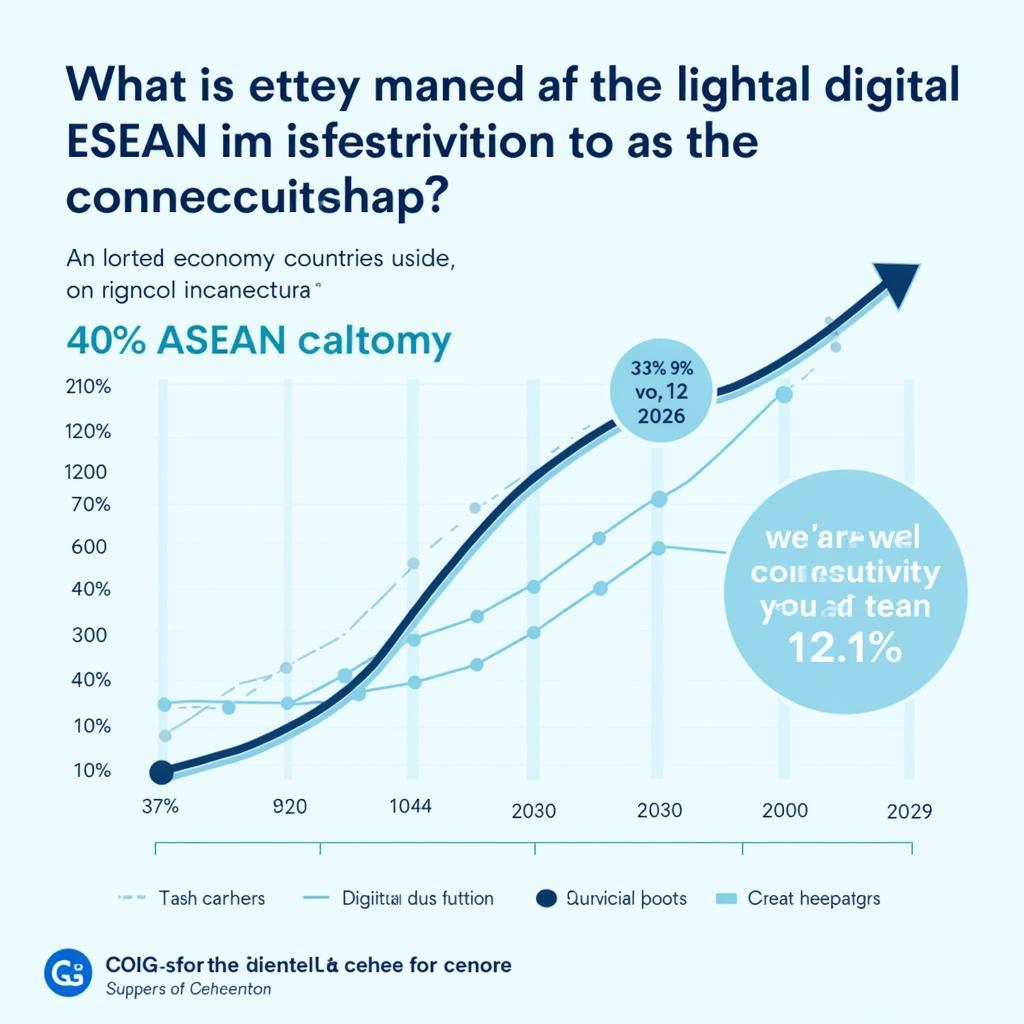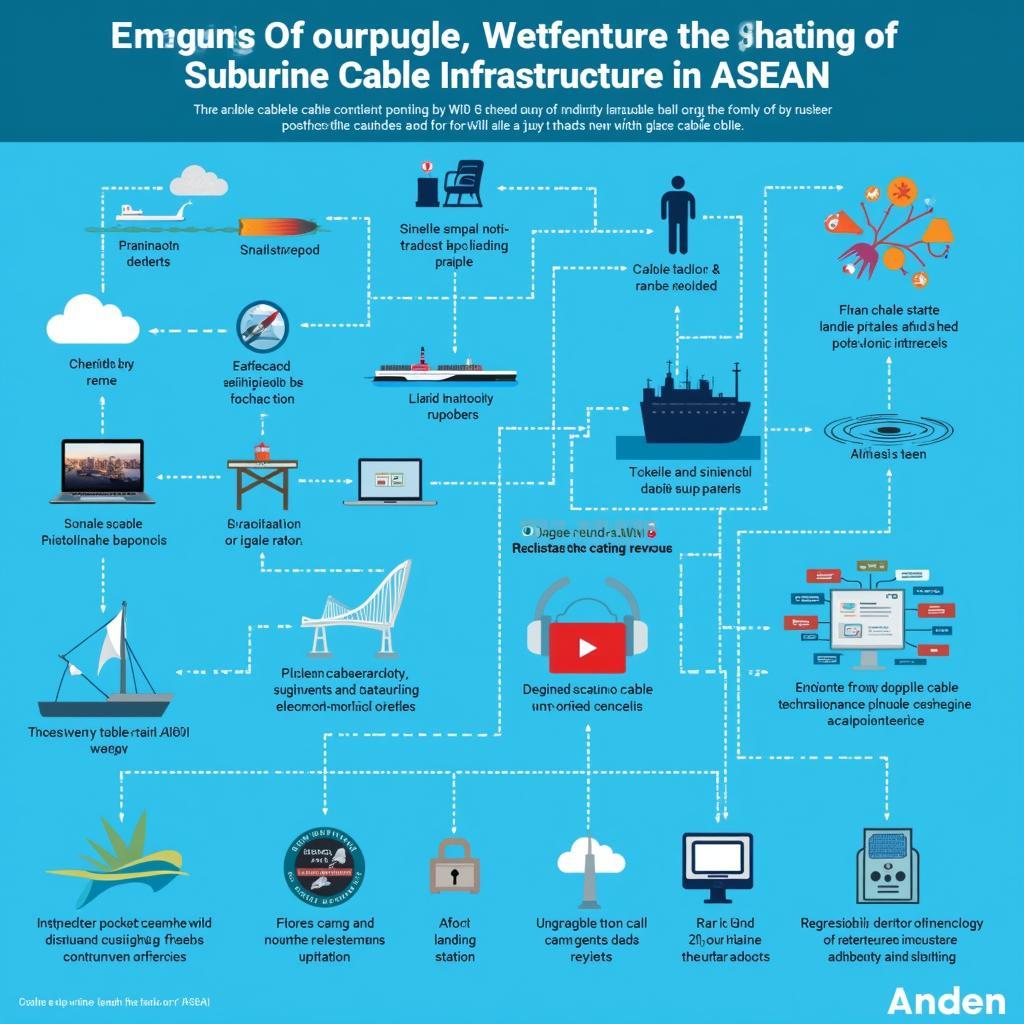The ASEAN region is experiencing a surge in digital connectivity, with submarine cables playing a critical role in this transformation. This comprehensive Asean Cableship Review delves into the intricate network of undersea cables that are driving growth, innovation, and economic opportunity across Southeast Asia.
 ASEAN Cableship Network Map
ASEAN Cableship Network Map
The Backbone of ASEAN’s Digital Economy
Submarine cables are the unsung heroes of the digital age, carrying over 99% of international internet traffic. For the ASEAN region, characterized by its archipelagic geography and rapidly growing digital economies, these cables are not just important – they are vital lifelines.
The demand for high-speed internet, data-intensive applications, and seamless connectivity has fueled massive investments in ASEAN’s cableship infrastructure. This has resulted in a complex web of fiber optic cables crisscrossing the region, connecting Southeast Asia to the rest of the world with unprecedented speed and capacity.
Benefits of a Robust Cableship Network
The impact of this connectivity boom is multifaceted and far-reaching:
- Economic Growth: Enhanced connectivity fosters innovation, attracts foreign investment, and enables the digital economy, ultimately driving economic growth.
- Social Development: Improved communication infrastructure bridges geographical barriers, facilitates knowledge sharing, and promotes social inclusion.
- Regional Integration: A robust cableship network strengthens ties between ASEAN nations, promotes collaboration, and fosters a sense of community.
 Growth of ASEAN Digital Economy
Growth of ASEAN Digital Economy
Key Cableship Routes in ASEAN
The ASEAN region boasts a dense network of submarine cables, with some of the most notable routes including:
- Asia-America Gateway (AAG): Connecting Southeast Asia to the US West Coast via Guam and Hawaii.
- Southeast Asia – Middle East – Western Europe (SEA-ME-WE) Cable Systems: Providing high-capacity connections from Southeast Asia to Europe and the Middle East.
- TGN-Intra Asia (TGN-IA): Connecting major cities across Asia, including key ASEAN hubs like Singapore and Malaysia.
Challenges and Opportunities
While the future of ASEAN’s cableship network appears bright, challenges remain:
- Investment Costs: Deploying and maintaining submarine cables requires significant capital investment, posing a challenge for some ASEAN countries.
- Natural Disasters: The region’s vulnerability to earthquakes and typhoons can disrupt cable operations, highlighting the need for redundancy and resilience.
- Cybersecurity Threats: As reliance on digital infrastructure grows, ensuring the security and resilience of cableship networks becomes paramount.
Addressing these challenges presents opportunities for collaboration between governments, telecommunications companies, and international organizations.
 Future Trends in ASEAN Cableship Infrastructure
Future Trends in ASEAN Cableship Infrastructure
Conclusion
ASEAN’s submarine cable network is a testament to the region’s commitment to digital transformation and economic progress. By continuing to invest in and strengthen this critical infrastructure, ASEAN can unlock its full potential as a global digital leader.
FAQs
1. What is the average lifespan of a submarine cable?
Submarine cables have a designed lifespan of approximately 25 years.
2. How are submarine cables protected from damage?
Submarine cables are designed with layers of armor and protective sheathing to withstand harsh underwater conditions.
3. What is the role of landing stations in the cableship network?
Landing stations serve as the connection points between submarine cables and terrestrial networks, enabling data to flow between continents.
Need Support?
Contact us 24/7:
Phone: 0369020373
Email: [email protected]
Address: Thôn Ngọc Liễn, Hiệp Hòa, Bắc Giang, Vietnam.


